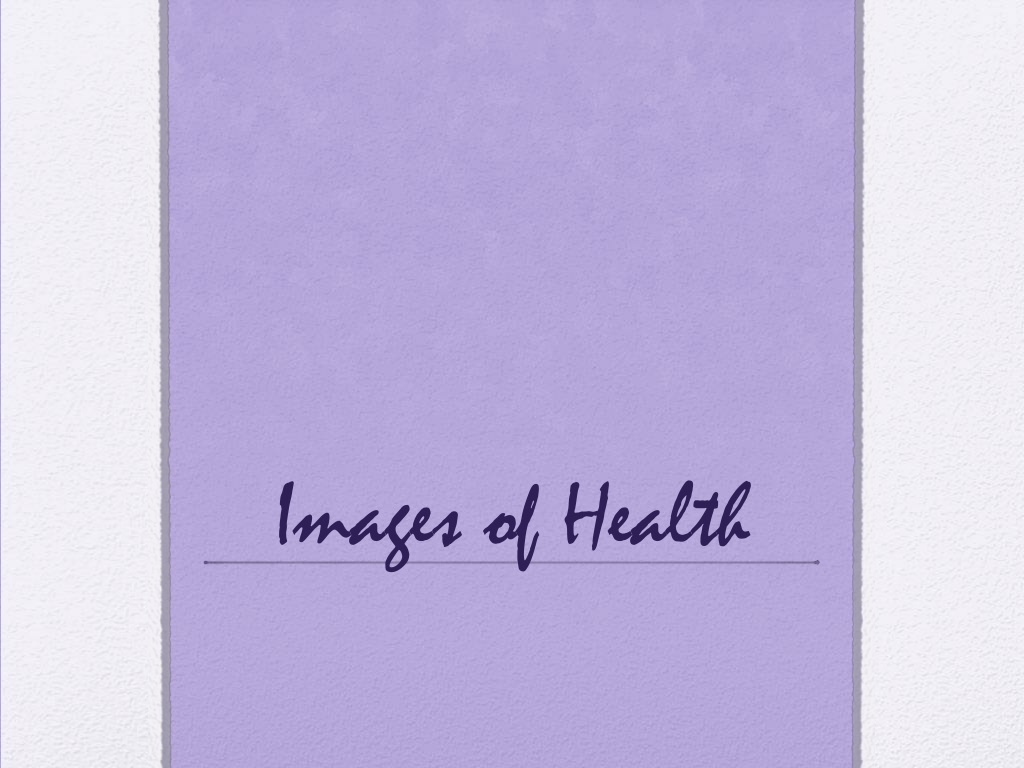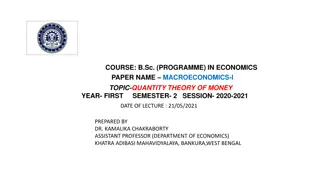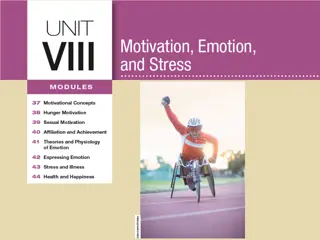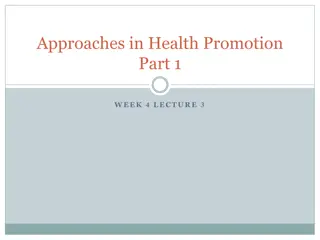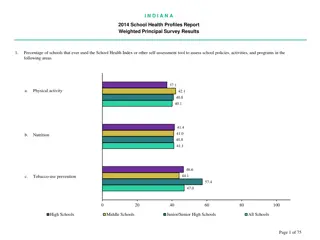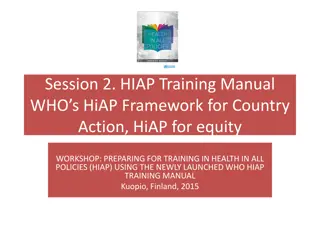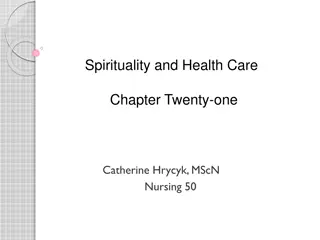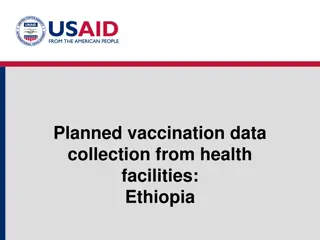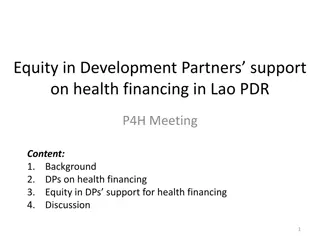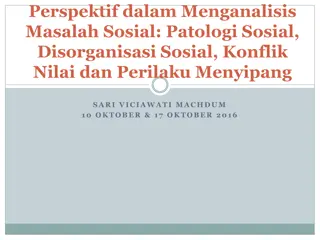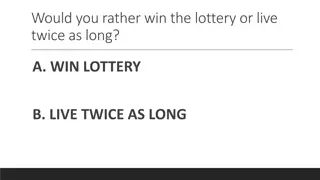Exploring Different Perspectives on Health
Various images of health are discussed in this content, revealing the complexities and diverse views surrounding the concept of health. From health as the absence of disease to health as wholeness, well-being, growth, and empowerment, each perspective offers unique insights. The importance of understanding these images in healthcare practice is emphasized to better assist individuals in achieving optimal health outcomes.
Download Presentation

Please find below an Image/Link to download the presentation.
The content on the website is provided AS IS for your information and personal use only. It may not be sold, licensed, or shared on other websites without obtaining consent from the author. Download presentation by click this link. If you encounter any issues during the download, it is possible that the publisher has removed the file from their server.
E N D
Presentation Transcript
Outline Introduction Health as goodness of fit Images of health Health as wholeness Imagining health Health as well-being Health as antithesis of disease Health as empowerment Health as a resource Health as a balanced state Conclusion Health as growth Health as functionality
Introduction There are different constructions (images) of health. These images represent the clustering of views on health, and provide a framework to explain the dynamics of client change. Each image category my include aspects that are also found in other images. Reflecting on these images of health reveals the complexities of health.
Images of Health Antithesis of disease Wholeness Balanced state Well-being Growth Empowerment Functionality Resource Goodness of fit
Imagining Health Health is an elusive term. Health care professionals know more about disease, pathology, and dysfunction than they do about health. The clients look to us to assist them to achieve their desire to be and feel healthy. The client and the health care professional may have different expectations and images of health
Imagining Health (continued) The images of health reflect a clustering of views on health. They are offered to stimulate a re-visioning of health. Health stands on its own as a life process, to be imagined and realized within the unique capacity of everything human.
Health as the Antithesis of Disease Health and disease are viewed as opposite states, with health as the absence of disease. Dubos (1965) referred to the state of health and disease [as] the expressions of the success or failure experienced by the organism in its efforts to respond adaptively to environmental changes (p.xvii). Population s health is measured by its opposite, the population s morbidity and mortality statistics
Health as the Antithesis of Disease (continued) Persons suffering from disease are often ostracized by society. Their condition or illness is contradictory to what is defined as healthy by society, and their presence threatens the perceived social order. In this definition of health, evaluative statements about clients are made within the parameter of illness, using a system of disease signs and symptoms.
Health as the Antithesis of Disease (continued) Medical model Health is a condition of norm illness falls outside the range of normal
Health as a Balanced State This image incorporates epidemiology, which provide an important understanding of the relationship among host, agent, and environment. A major goal of epidemiology is to identify aggregates, or subpopulations at high risk for disease or health-threatening conditions. The intent is to identify risk factors, and then modify or reduce them through preventive interventions.
Health as a Balanced State (continued) In the epidemiologic framework, health is identified along a health-illness-death continuum The origins of health and illness are indicative of other processes that occur before the human being is affected (heredity/predisposing genetic forces)
Health as a Balanced State (continued) Period of prepathogenesis: The preliminary interaction of the human host, potential disease agent, and environmental factors in disease production/ (a period of health) Period of pathogenesis: When the disease provoking stimuli produce changes in the human system Disease is a state of disequilibrium, or dis-ease Health is a state of balance or equilibrium
Health as a Balanced State (continued) Equilibrium is achieved through the interaction of the multiple factors and forces that influence and contribute to health Physical, physiological, psychological, social, cultural, spiritual, political and economic forces interact and contribute to the unique image of health for each individual, family, group, and community. Cultural ideologies and traditions also influence the image of health as balance.
Health as Growth This image Leads to a further view of health as the successful fulfillment of certain tasks appropriate to particular life stages. Persons are seen as having a capacity for growth that can be enhanced and supported, this development is seen as an ongoing process that occurs continuously and systematically throughout the life span.
Health as Growth (continued) Interventions at critical life stages are believed to be the most effective and to foster optimal growth. Through identification of certain transition points, the unique needs, behaviors, an motivations of certain populations are targeted. our ultimate goal as a society and as members of communities surely is to maximize human development and the achievement of full human potential (Hancock, Labonte, & Edwards, 1999, p. 522)
Health as Functionality Health is seen as the capacity to fulfill critical life functions. Functionality? For individuals : functional health patterns include all activities that influence a person s relationship with the environment. Physiological functions digestion, hydration, sleep, etc. Psychological functioning behaviour, communication, and emotional development.
Health as Functionality (continued) For families: The capacity to nurture family members through physical, emotional, educational, and social support activities. For communities: to provide community members with resources to sustain themselves. At the global level: Nations participate in achieving shared responsibility for mutual health goals for their population.
Health as Functionality (continued) When the functional capacity of individuals, , and communities is limited, health is altered, and adaptation is necessary to adjust to the environment and fulfill functions. Disability is viewed as a different ability. It requires an altered environment so that a person can achieve vital life functions. When the environment is made accessible to different abilities, then persons with disabling conditions become equally able.
Health as Functionality (continued) Rehabilitation: is a level of prevention, focuses on recovering remaining capacity to maintain function Health literacy also affects functional health. It refers to the capacity to obtain, process, and understand basic health information and services needed to make appropriate health decisions (P. 10)
Health as Goodness of Fit The fit between the person and the environment is imperceptible. This image considers the linking of the determining factors of health. Determinants of health are: Human biology, environment, health care, and life style. Special attention is now being given to the influence of individual life style on personal health. Why?
Health as Goodness of Fit (continued) Lifestyle is about choosing. Much progress in the overall major decline in death rates for the leading causes of death among Americans has been traced to reduction in risk factors. Focusing on lifestyle alone can easily result in blaming the victim Instead, health should be viewed as an outcome of multiplicity of determinants.
Health as Goodness of Fit (continued) Lifestyle is only one of the four major factors that determine health. Environmental determinants of health are often negotiated at the public policy level leaving individuals, ,and communities without a sense of personal control. Environmental factors such as poverty, racism, and resource allocation challenge the individual s potential for health and limit choice. Also, the availability, adequacy, and acceptability of health care can enable or diminish health potential.
Health as Goodness of Fit (continued) No one factor alone determines an individual s health But, there is opportunity for change to occur at the point these factors interface. The preparation of public health professionals for addressing the public s health relies on an understanding of the various determinants of health. The fit among these factors and forces shapes an understanding of the determinants of population health.
Health as Wholeness A holistic image of health is central to healing and complementary health care delivery. The idea that every aspect of a human being, family, or community is linked and interacting arises from a system theory
Health as Wholeness (continued) Health can be viewed as system integrity and unity. Supporting the integrity of the human system is the focus of promoting and maintaining health. Health is wholeness. Human systems are no longer viewed in isolation. Individual health, family health, society, community, nation , and the whole world are influenced by and affecting each other.
Health as Well-Being WHO defined the word health as a state of complete physical, mental, and social well-being, and not merely the absence of disease or infirmity Referring to health as complete state may mean that health requires no improvement and that anything other than complete well-being is not health It may also means that the term is unsuitable for either measuring or comparing states of health. Even if someone did achieve such a state of complete health, it would be short-lived.
Health as Well-Being (continued) Rather than being a complete static state, health involves maintaining completeness on an ongoing basis. Balance and dynamism are combined while a person, family, group, or community moves purposefully toward a goal. Well-being is an imprecise term submitting both subjective and objective definitions and methods of measurement. Different individuals experience the sense of well- being in very different ways
Health as Empowerment There is a strong link between individuals or communities sense of power and the level of health they experience. Powerlessness has been identified as a broad- based risk factor for the development of disease. The view of health as empowerment includes the belief that individuals possess many and diverse self-care abilities that contribute to determining their health.
Health as Empowerment (continued) Persons require certain self-care skills to feel in control and to direct their own life course. Community change depends on the ability of the community s members to self-direct. The ability to control and shape this vision is dependent on a redistribution of power within the health care system.
Health as a Resource Health is seen as a resource for everyday life, not the objective of living. Health is not a state or absolute condition but rather the dynamic capability to deal with life s challenges and care for oneself. Health is a life force for engaging in an evolving process of development.
Health as a Resource (continued) This image of health as resource for everyday living extends to community, society, and world proportions. Finally, a population that is not healthy cannot learn, cannot work, cannot develop (Fuenzalida-Puelma&Connors, 1989, p. xv)
Conclusion http://www.youtube.com/watch?v=4doR4lNRz xE .
